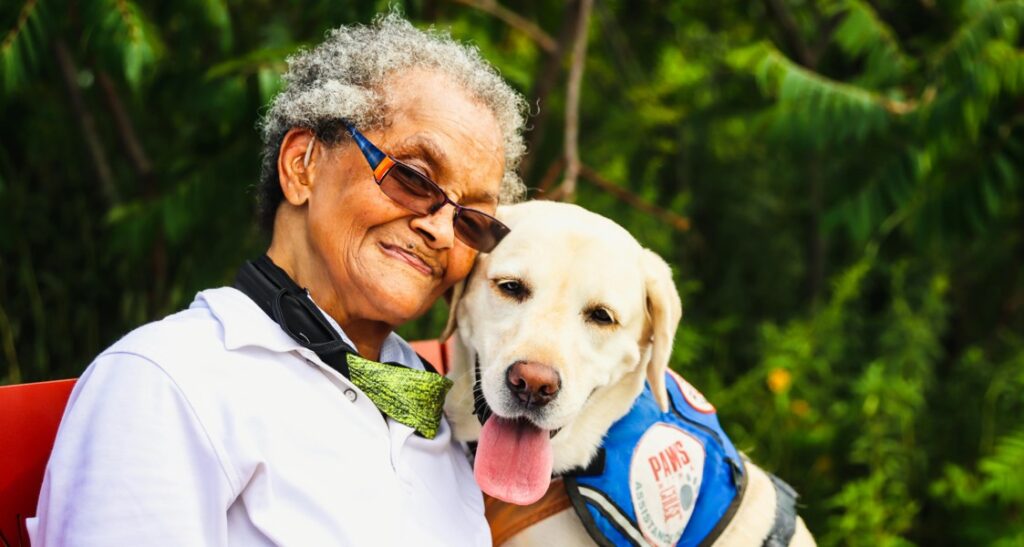From patients battling mental health conditions to those recovering from physical or emotional trauma, therapy dogs make a lasting difference to so many people in the UK.
They have become an important part of many rehabilitation programmes, offering both emotional support and physical motivation too. Thanks to their sweet, gentle nature and unconditional love, they can improve outcomes for individuals facing various health challenges.
Below, we’ve discussed the ways that therapy dogs contribute to strong and successful rehabilitation.
1. Enhancing emotional wellbeing
One of the most immediate benefits of therapy dogs is their ability to boost our mood! These lovable animals create a calming presence, reducing anxiety and stress in clinical and domestic settings.
Studies have proven that interacting with therapy dogs lowers cortisol levels while increasing the production of oxytocin, the hormone associated with bonding and happiness. For individuals struggling with the emotional toll of recovery, the presence of a happy dog can provide comfort and alleviate feelings of loneliness.
2. Facilitating physical rehabilitation
Therapy dogs also play a vital role in physical rehabilitation.
With gentle energy and boundless enthusiasm, these dogs encourage patients to do some exercise or tackle routines that might otherwise feel daunting. Their presence alone helps those recovering from personal injuries, offering both physical and emotional support during the healing process.
Activities like walking, throwing a ball, or grooming the dog, aid in physical movement and cultivate a sense of accomplishment. For stroke survivors or individuals recovering from surgeries, therapy dogs are powerful motivators. Their visit could brighten up a day and leave a lasting sense of hope.
3. Promoting social interactions
Rehabilitation can often be a lonely process, particularly for those in long-term care. It’s easy to strike up a conversation with someone about a dog, so therapy dogs quickly serve as social catalysts.
By encouraging patients to interact with others, including caregivers, family members, and peers, therapy dogs reduce communication barriers.
Whether through group activities centred around the dog or casual conversations inspired by their presence, therapy dogs help to fight loneliness and build supportive, trusted networks.
4. Providing purpose and motivation
Beyond physical and emotional benefits, therapy dogs give a sense of purpose. Caring for and spending time with the animal can kickstart routine and responsibility, which are both highly beneficial for isolated individuals.
Knowing that a therapy dog depends on them for attention or play can reignite their motivation and help patients rediscover a sense of agency in their lives. This renewed drive can translate into greater commitment to their long-term rehabilitation journey.
The bottom line
Therapy dogs are so much more than companions: they are active participants in the healing process. They aid in physical recovery, foster social connections, and generally carry a profound impact.
By incorporating therapy dogs into rehabilitation programmes, we prove a powerful, natural way to support individuals on their path to recovery. Healing often comes in unexpected forms, including four paws and a waggy tail!

